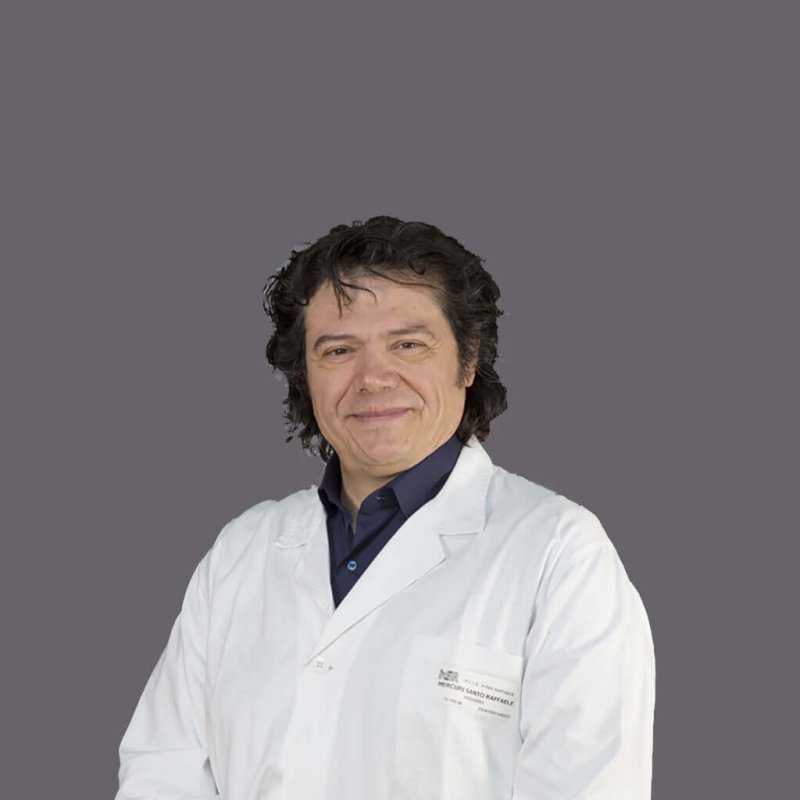Psoriasis: what it is and how it is treated

Publication date: 26-02-2021
Updated on: 14-02-2023
Topic: Dermatology
Estimated reading time: 1 min

Article Author
Communication Team GSD
Medical Editor
Santo Raffaele Mercuri
Editor and Translator
Viktoryia LuhakovaToday there are innovative therapies for psoriasis capable of changing the quality of life of those affected. The Chief of the Dermatology department of the San Raffaele Research Hospital tells us about it
Psoriasis is a chronic inflammatory skin disease of autoimmune origin, of which stress can be a trigger or a pejorative cause. In Italy alone, nearly 3 million people between 15 and 45 y.o. suffer from it.
It has a great impact on the quality of life of those affected; social and personal spheres of life are concerned the most. Today there are treatments that can keep it under control and reduce its symptoms. We discussed it with Dr. Santo Raffaele Mercuri, Chief of the Dermatology Department at the San Raffaele Research Hospital.
What is psoriasis
Psoriasis is characterized by the appearance of red patches, surmounted by scaly crusts, which are localized in various parts of the body, more commonly:
- scalp;
- elbows;
- knees;
- palms of the hands;
- nails;
- lower back and intergluteal sulcus.
About 50% of patients develop the first sings of the disease before 20 y.o.
Causes and when it occurs
Psoriasis is a disease that:
- genetically transmitted: about 1/3 of patients have a close relative who suffers from it;
- multi factorial: it is greatly influenced by environmental conditions and psycho-emotional state.
Dr. Mercuri explains: “The primary cause of the psoriasis lesions is linked to the activity of the immune system which causes an overproduction of skin cells and causes the skin to thicken and develop spots and plaques”.
Psoriasis can begin in a mild way, even starting from a small spot on a nail, and remain so, or, immediately manifest itself in a severe form affecting large areas of the skin.
The course is not regular and, although in certain periods it seems to almost disappear, it flares up in conjunction with periods of high stress and then improves in the summer season, by spending time by the sea and under the sun.
How to cure
The therapeutic process is evaluated by a dermatologist based on the patient's symptoms, location and distribution of the patches and the treatment is distinguished according to its severity.
Treatment of mild forms
The milder forms of psoriasis are usually treated locally with emollient and anti-inflammatory creams or, for the treatment of localized areas, with excimer laser, which acts through the emission of UVB rays and is quick, painless and able to lead to a regression of the lesions after just a few sessions.
Treatment of the most severe forms with new drugs
For the most severe forms, which make up about 10% of cases, there are now very innovative therapies such as biological or target drugs.
“Biological drugs represent a great therapeutic novelty on the psoriasis front. Once injected, they selectively reach inflammatory skin cells and block the mechanisms underlying the disease. They can be administered on a weekly or monthly basis, based on the patient's status,” explains Dr. Mercuri.
New treatments: biologic drugs for psoriasis
Biological drugs for psoriasis are dispensed by the National Health Service in hospitals that can deliver them in Psocare Centers. They act quickly and specifically on patches, bringing the first benefits after just one session.
“They have no side effects and significantly improve the conditions of patients suffering from severe and uncomfortable forms,” concludes the specialist.
Complications: psoriatic arthritis
Psoriasis does not only affect the skin, but, in its most extreme forms, can also affect the joints and give rise to psoriatic arthritis, a complication characterized by stiffness and swelling in the joints accompanied by intense pain, a sensation of heat and redness.
“To avoid complications, it is very important not to neglect the symptoms, even in the presence of only the thickening of a nail, contact a dermatologist for a timely diagnosis and proceed with targeted therapy,” concludes Dr. Mercury.